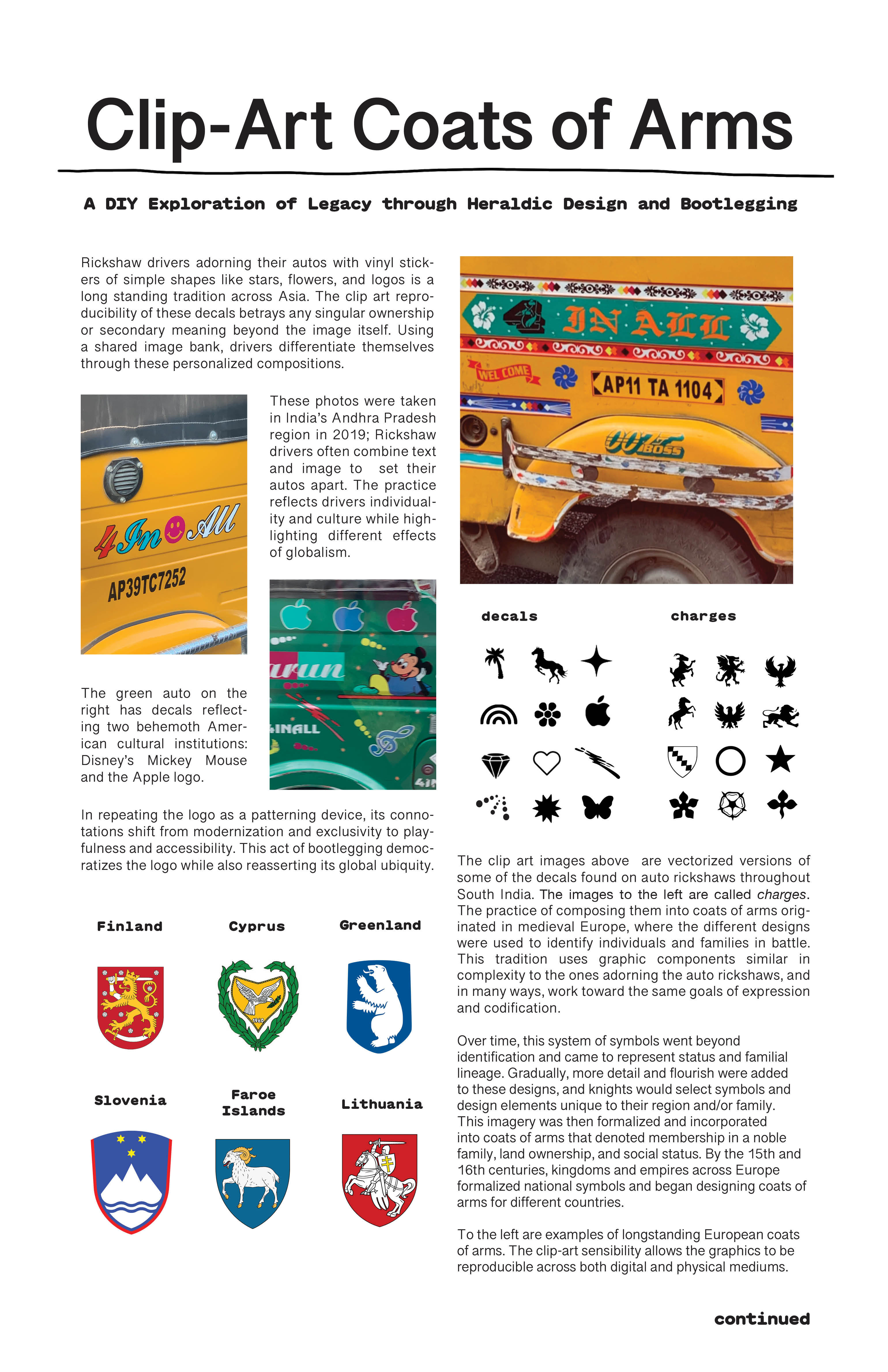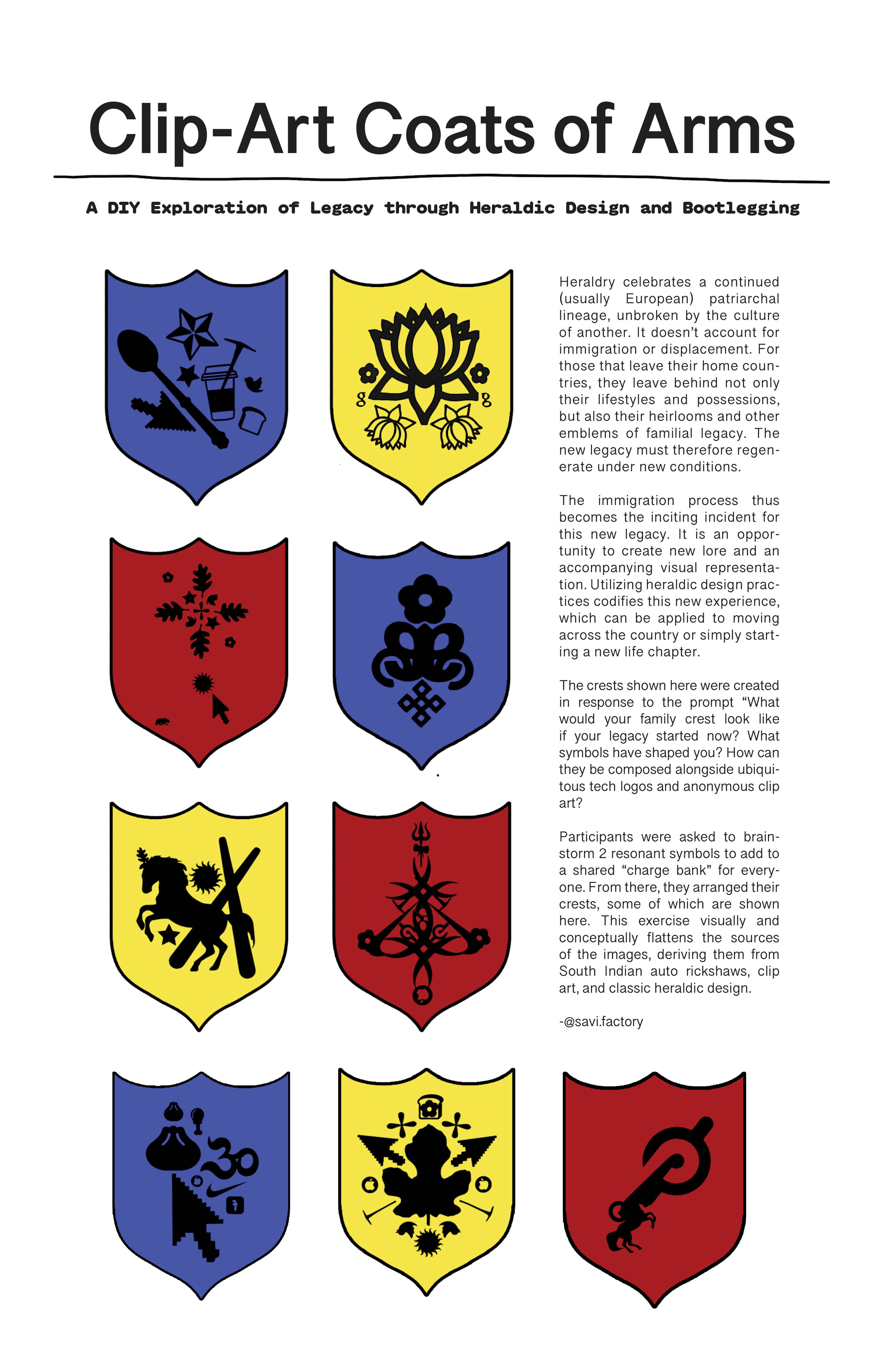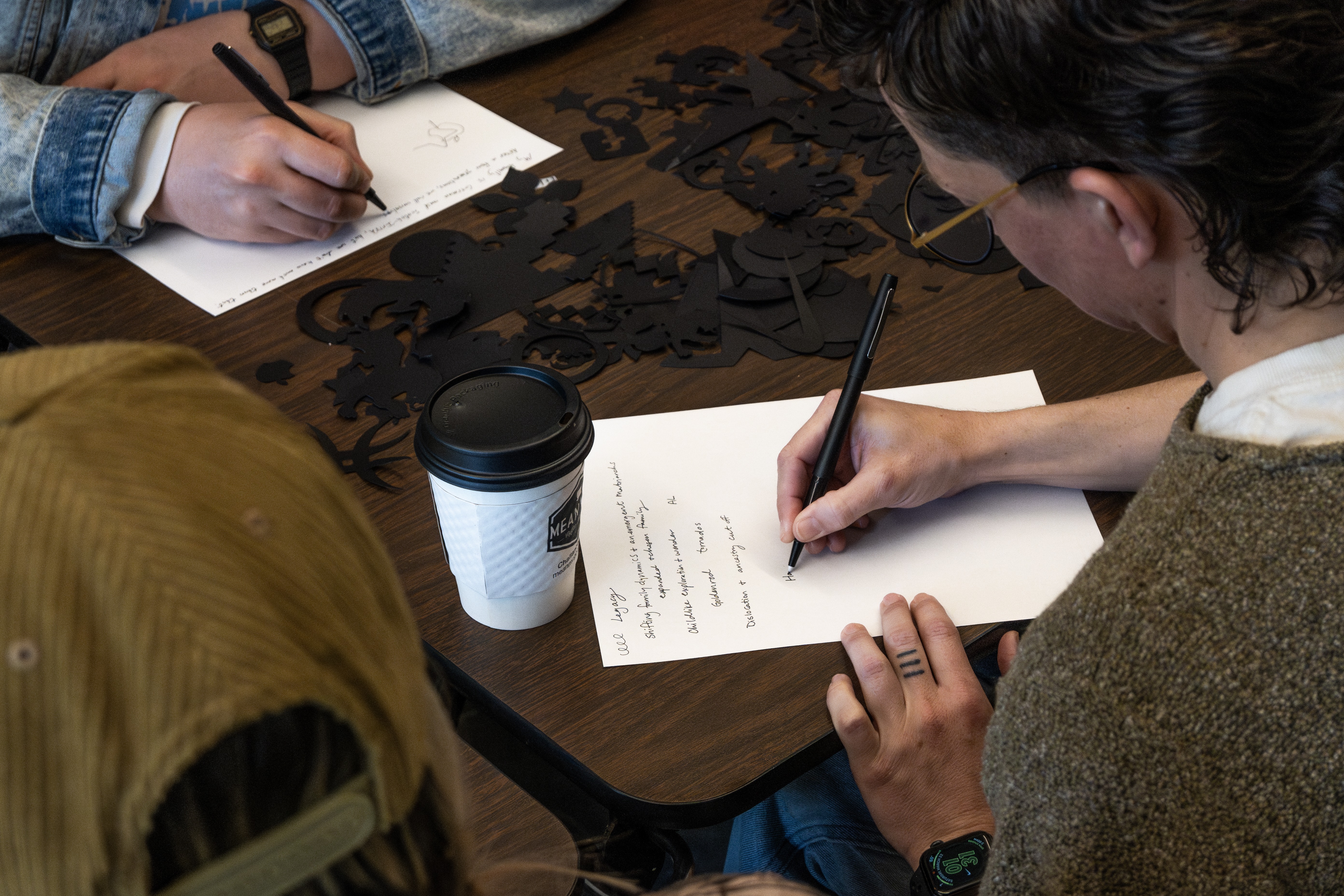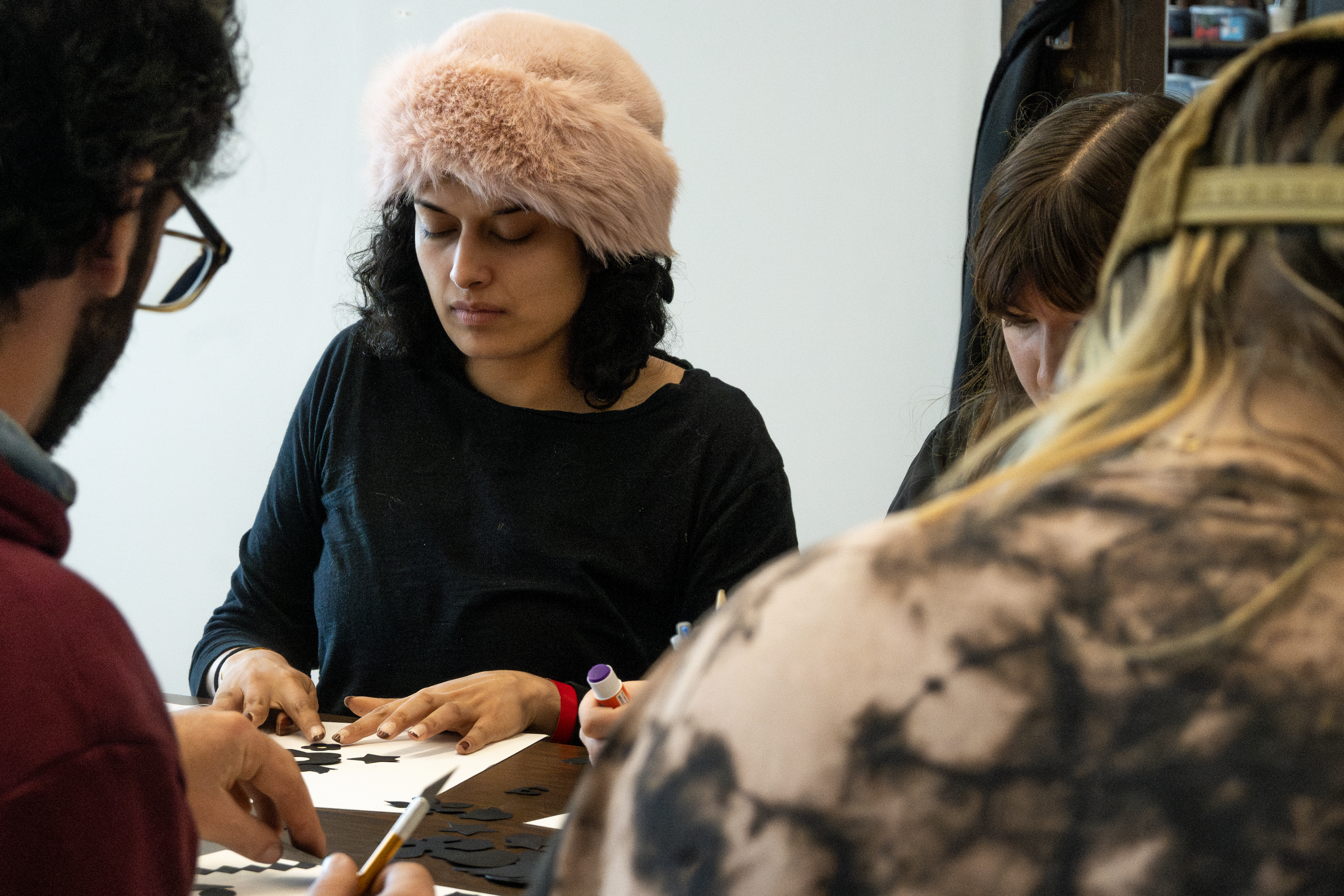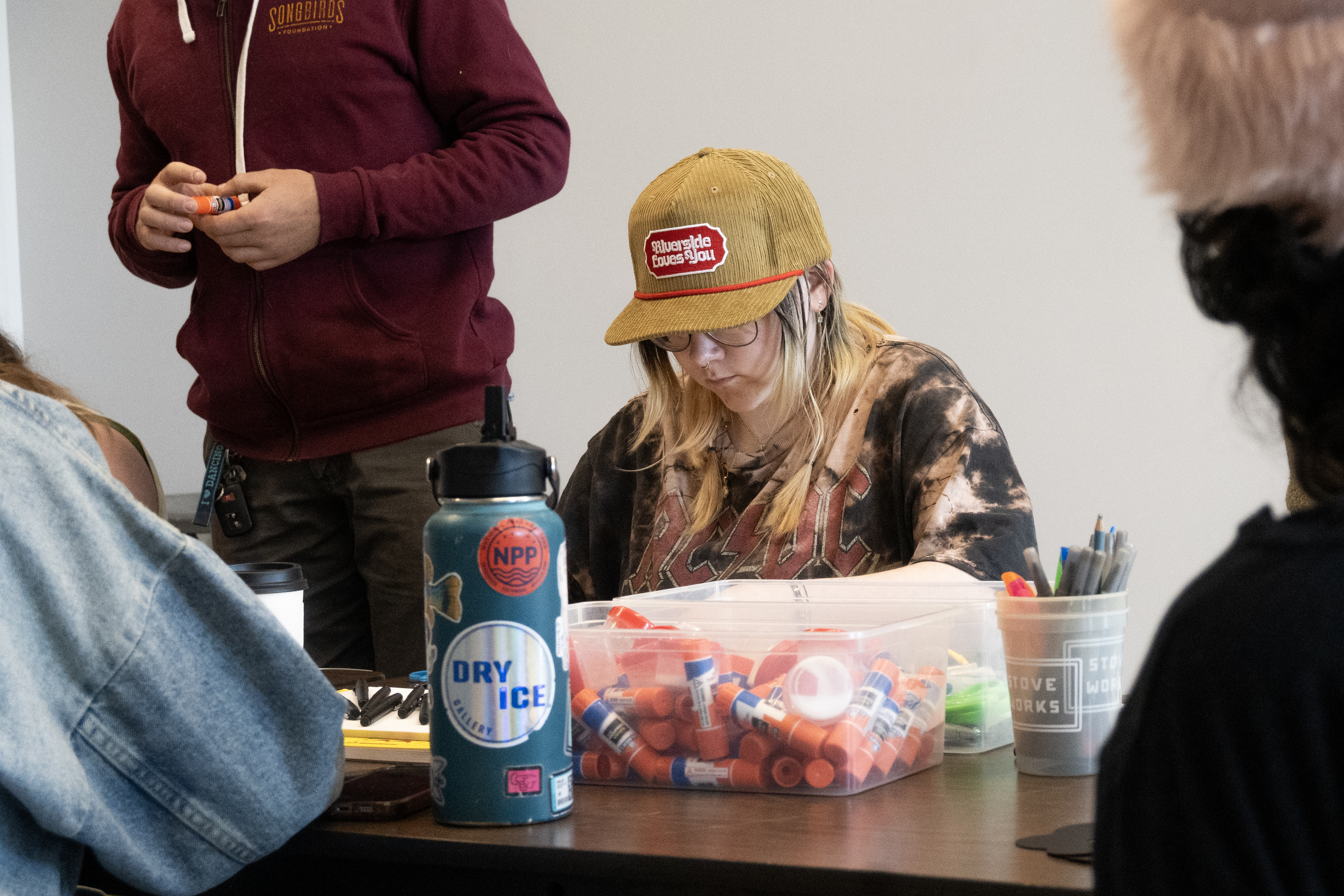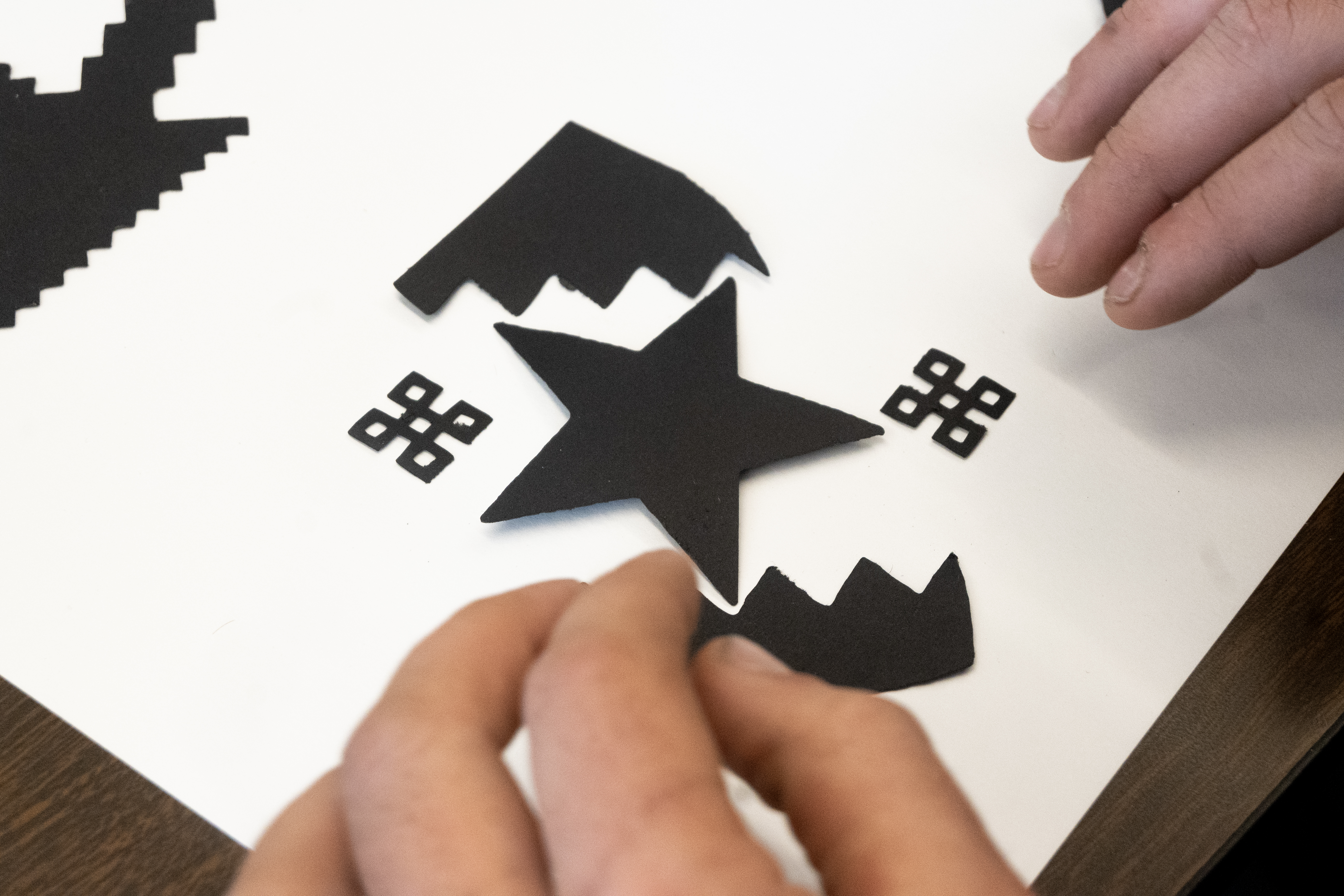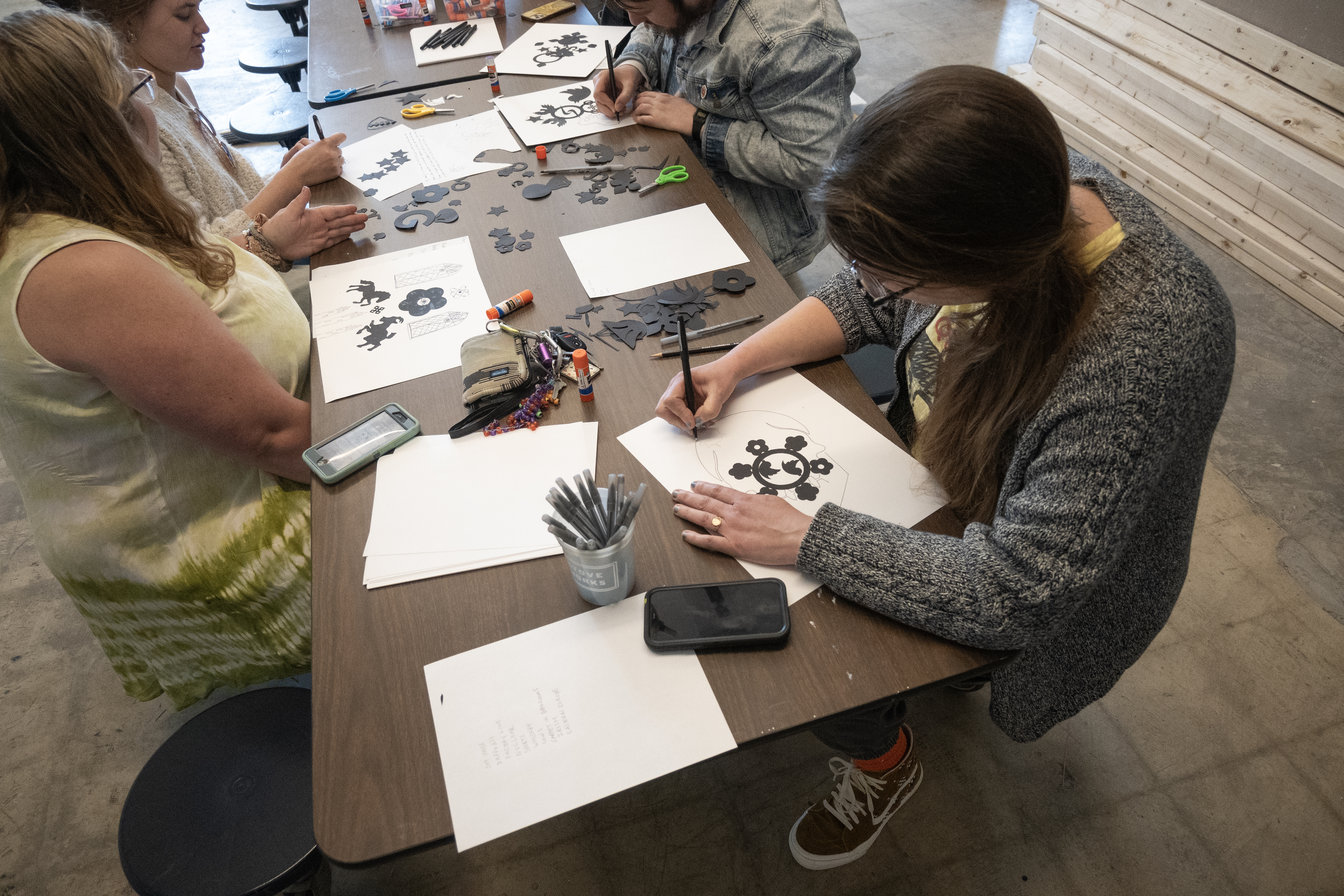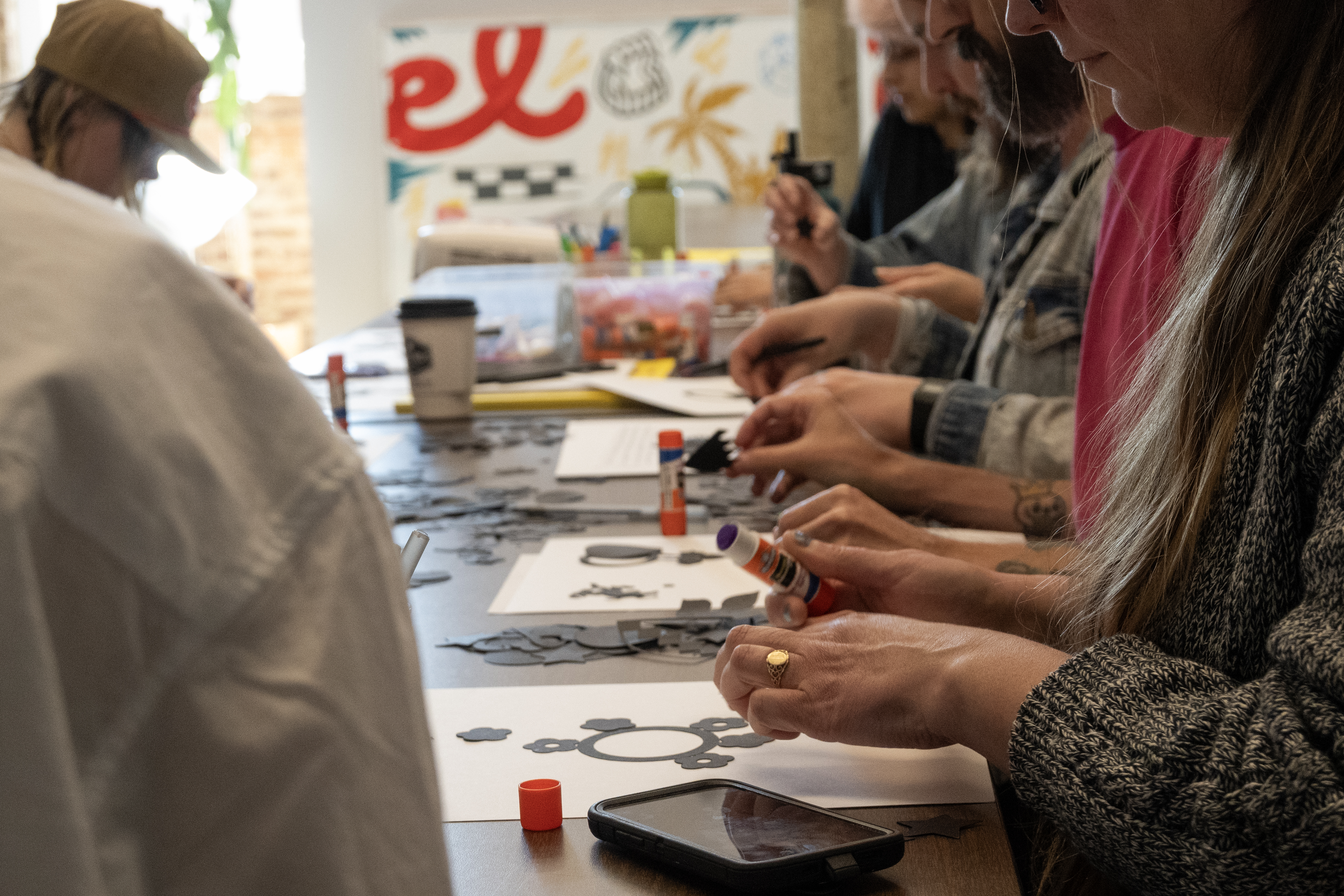It doesn’t account for immigration or displacement. For those that leave their home countries, they leave behind
not only their lifestyles and possessions, but also their heirlooms and other emblems of familial legacy.
The immigration process thus becomes the inciting incident for a new legacy. It is an opportunity to create
new lore and new visual representation. Utilizing heraldic design practices codifies this new experience.
What would your family crest look like if your legacy started now? What symbols have shaped you?
How can they be composed alongside ubiquitous tech logos and anonymous clip art?
Participants were asked to brainstorm two resonant symbols to add to a shared “charge bank” for everyone.
Charges are the individual symbols (animals, fleurs, crosses, etc) that comprise a coat of arms in heraldic design.
From there, participants arranged their crests using different images from the shared bank, some of which are
shown below on the right. This exercise visually and conceptually flattens the sources of the images, deriving
them from South Indian auto rickshaws, clip art, and classic heraldic design.
The essay poster below was created after the first iteration of the workshop. I scanned select coats of arms
and placed them onto primary colored crests, adding some heraldic context to the pieces. The front of the
poster (left) delves into the concept and South Asian decal reference point of the exercise, and includes
examples of European heraldic design.
Scroll for photos from the workshop held at CCA in San Francisco and the Stoveworks Artist Residency in
Chattanooga, TN.
